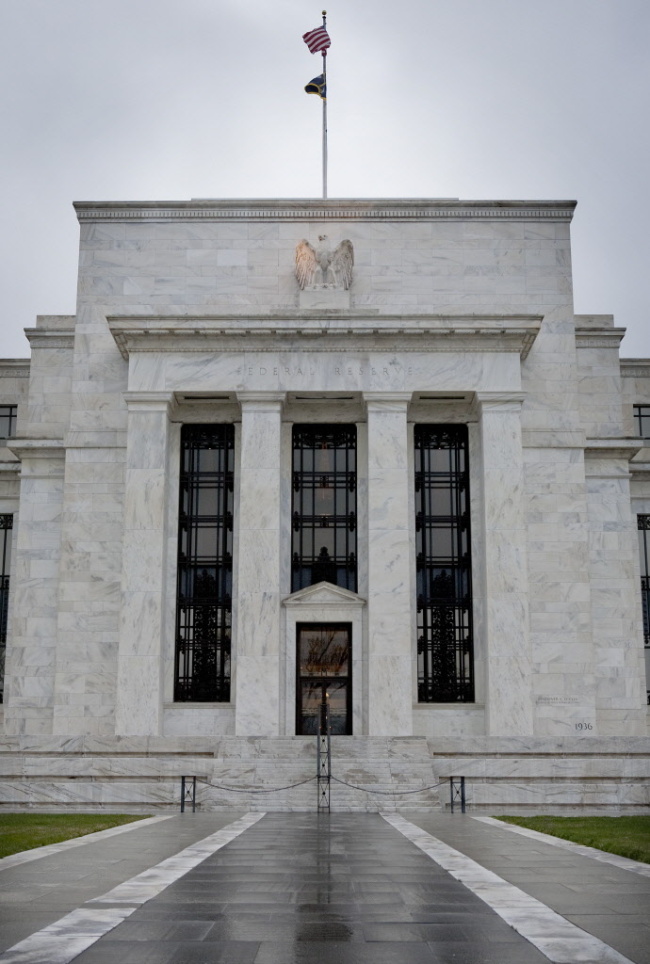WASHINGTON (AP) ― The Federal Reserve agreed Tuesday to raise the amount of capital that big banks must hold to prevent their collapse and reduce the threat they pose to the broader financial system.
The higher capital requirements were mandated by Congress in the aftermath of the 2008 financial crisis. They are also in accordance with international standards agreed to after the downturn.
Banks had lobbied to modify the requirements on higher capital, saying they could hamper their ability to lend. But experts said most big banks have already increased their capital reserves.
“With these revisions to our capital rules, banking organizations will be better able to withstand periods of financial stress, thus contributing to the overall health of the U.S. economy,” said Fed Chairman Ben Bernanke.
But critics say the rule failed to go far enough and kept taxpayers at risk of having to bail out banks again, should they suffer the kinds of losses incurred during the crisis.
“The rule announced by the Federal Reserve today fails to learn the lesson of the most recent crisis and makes the next crisis ― and more bailouts ― more likely,” said Dennis Kelleher, president of Better Markets Inc., a nonprofit bank watchdog group.
 |
The U.S. Federal Reserve building in Washington, D.C. (Bloomberg) |
Hundreds of U.S. banks received federal bailouts during the financial crisis that struck in 2008 and triggered the worst economic downturn since the Great Depression. The list included the nation’s largest financial firms, including JPMorgan Chase, Goldman Sachs, Citigroup, Bank of America and Wells Fargo. The banking industry has been recovering steadily since then, with overall profits rising and banks starting to lend more freely.
Under the rule, all banks will need to maintain a level of high-quality capital equal to 4.5 percent of their loans and other assets, weighted by how risky those assets are.
A Fed staff memo said that banks with more than $10 billion in assets and more than 95 percent of those with less than $10 billion in assets would meet the 4.5 percent capital requirement. There is currently a 4 percent requirement for capital but it is not restricted to just high-quality capital, such as bank stock or retained earnings.
The nation’s 19 largest banks with assets of $250 billion or more will have to start meeting the requirements by Jan. 1. All other banks will have to begin meeting the requirements a year later. The rules will be fully phased in by the end of 2018.
The final rule dropped a provision from an earlier draft that required banks to hold higher amounts of capital for mortgage loans judged to be risky. The change was made after the housing industry and smaller community banks argued against this rule. They objected because they said it would restrict mortgage loans at a time when the housing industry was still struggling to recover.
“The smaller banks did OK and the mortgage lobby had its voice heard,” said Alok Sinha, the head of the banking and securities team at accounting firm Deloitte & Touche.
Fed officials also signaled Tuesday that they are considering moving forward on even tougher standards for the nation’s largest banks.
Fed board member Daniel K. Tarullo said during the discussion that “we have a number of capital-related initiatives remaining.”
He said there were four rules being considered that would increase capital requirements for eight big banking organizations that have been identified as having global systemic importance. This group includes Goldman Sachs, Bank of America, JPMorgan Chase and Citigroup.
Separately, the Fed and the Federal Deposit Insurance Corp. released the public portions of so-called living wills submitted by four large banks ― Wells Fargo & Co., BNP Paribas, HSBC Holdings and Royal Bank of Scotland Group. The wills detail how the government could dismantle their operations in the event of a crisis.
The wills are required by the financial overhaul legislation as a way to answer critics who contend that some institutions are too big to fail and will look to taxpayers to bail them out.
In April, the Fed and FDIC demanded additional information from 11 large banks that were in the first group to submit living wills last year. The banks, which included Bank of America, Goldman Sachs and JPMorgan, were given until Oct. 1 to supply additional information demanded by regulators.




![[Weekender] Korea's traditional sauce culture gains global recognition](http://res.heraldm.com/phpwas/restmb_idxmake.php?idx=644&simg=/content/image/2024/11/21/20241121050153_0.jpg)



